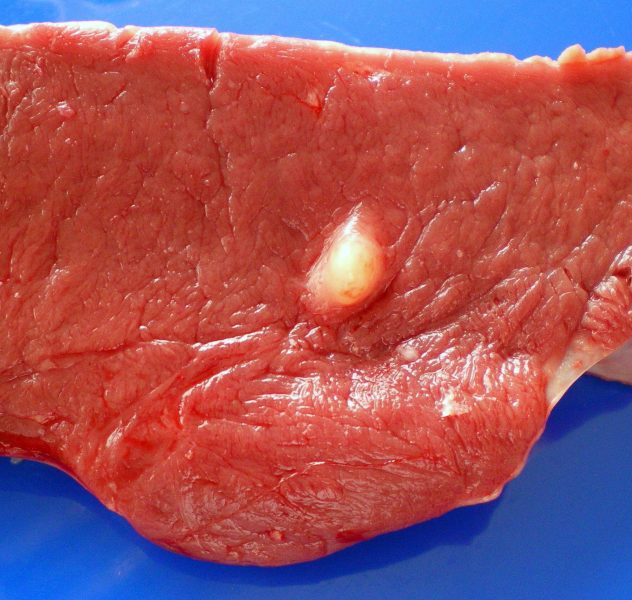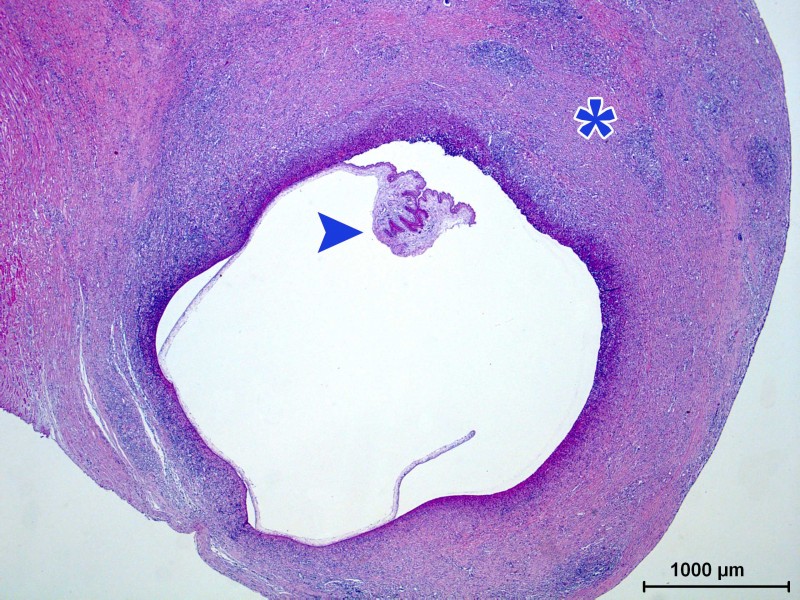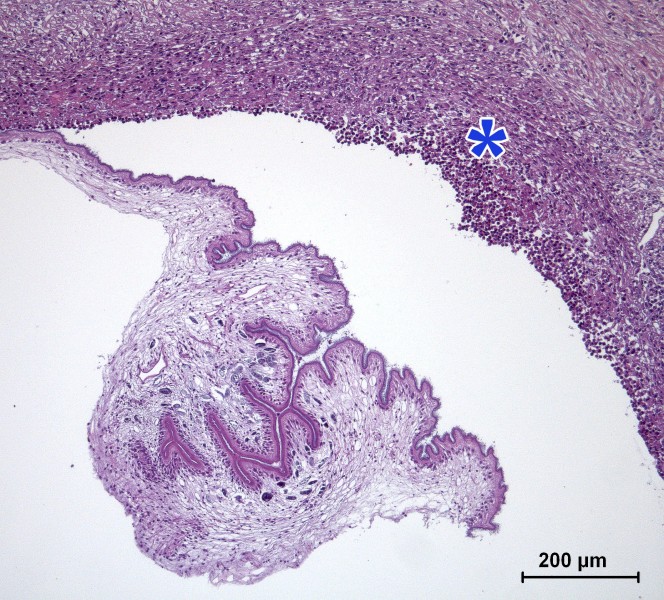Bovine cysticercosis.
Histopathological examination of samples submitted in this case allowed the identification of a T.saginata scolex within the cyst. Lesions associated with bovine cysticercosis often consist of a necrotic or calcified central area (where the cyst used to be) associated with an intense granulomatous or pyogranulomatous inflammatory reaction with presence of some polymorphonuclear eosinophilic leukocytes.
Cysticercus bovis is the larval stage of a zoonotic platyhelmint, Taenia saginata. Cysts are of soft consistency (or very hard, if it's an involuted cyst) and are typically found in muscles: especially in the heart, masseter, tongue and diaphragm. The size of the cysts is 0.5-1 x 0.5 cm. They can evolve into paler and opaque structures and even become caseificated and calcified.
We have taken the freedom to publish this case, prior to the entry into operation of the SESC support network, because we have both macroscopic and microscopic very good quality images.





1 comment(s)
very nice helpfull case studies